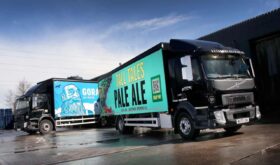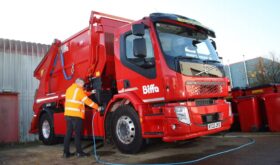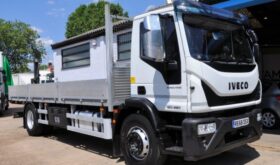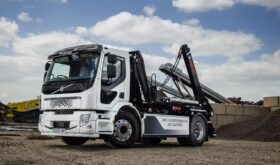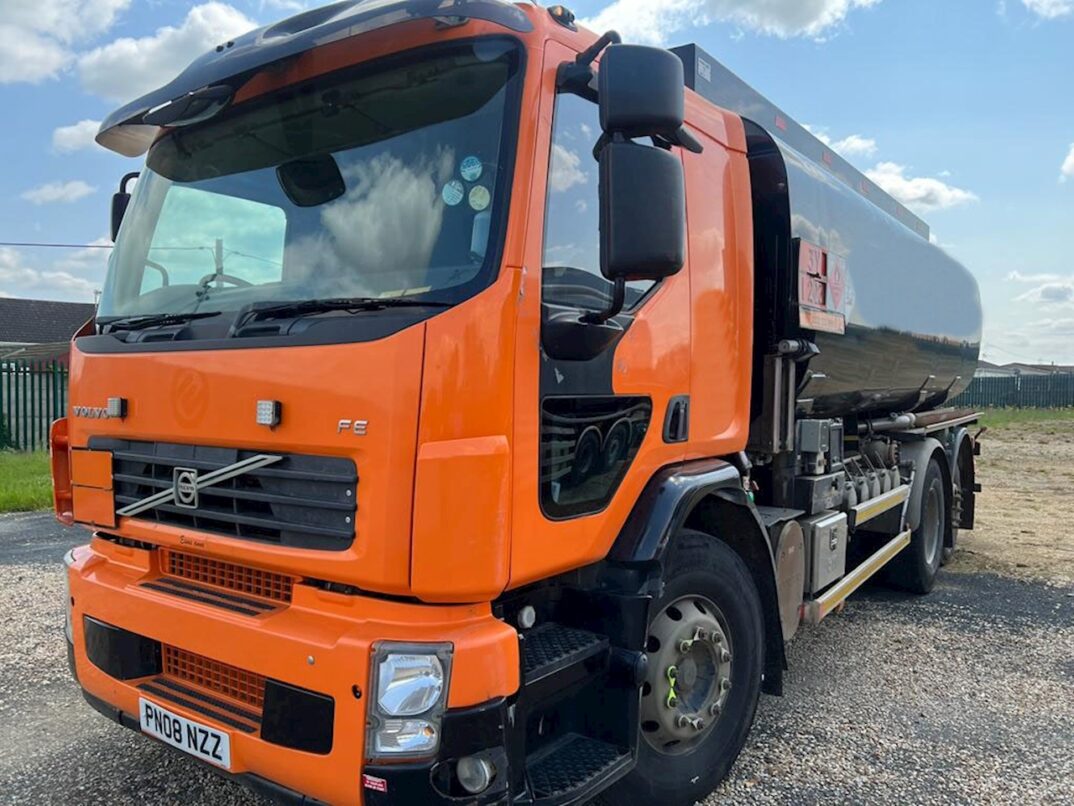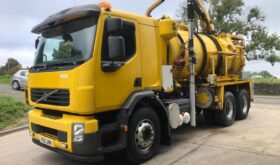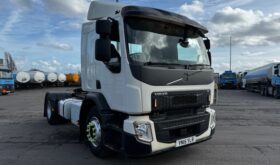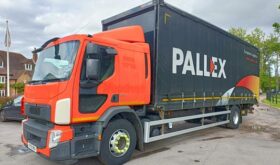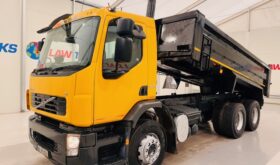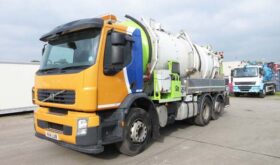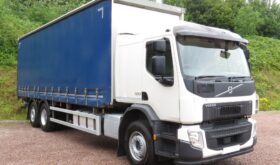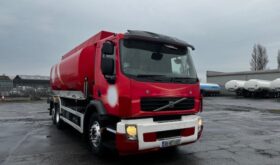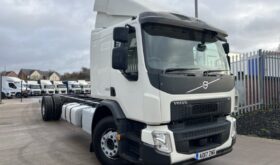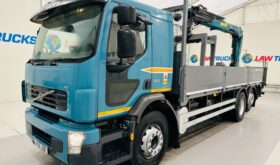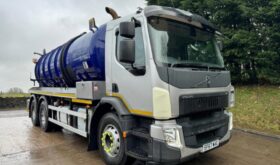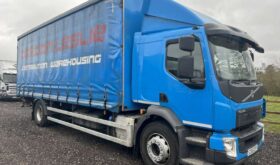Volvo FE Trucks for Sale (19)
Not hugely popular in the UK, there are nonetheless always a good choice of used Volvo FE trucks for sale on these pages. The FE sits in the 18 to 26 tonne weight range and is usually sold as a rigid truck in the UK – although there is an option for an urban tractor unit version. Many used examples of the FE have been configured for municipal operation – refuse trucks and gritters, for example. In the used truck market of the UK, the FE tends to find itself used as a dustcart and, although there is a low entry cab available, it is often not used on dustcart operation.
More Volvo FE Trucks Info
The FE Engines
The FE uses Volvo’s D8K engine with a choice of four power outputs, 250, 280, 320 and 350 horsepower. Earlier models (pre-Euro 6 in 2013) were available with 240, 260, 300 and 340hp.
The FE Cabs
There are three cabs available – a day cab, a short sleeper cab and the full sleeper cab. All cabs are the same height and width (1.6m high and 2.3m wide) but the length changes with the short sleeper just 40cm longer than the day cab – better for storing things than sleeping in – and the full sleeper a full two feet longer than the day cab.
There is also a low-entry version of the FE cab suitable for refuse operation and airport duties.
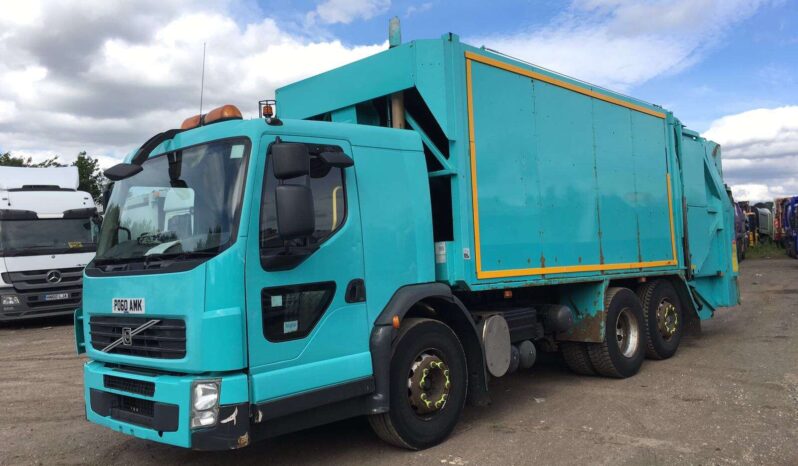
Latest Volvo FE Trucks News
Brewery Changes to Volvo Trucks Rigid Fleet
As part of its ongoing fleet transition from a rival vehicle manufacturer, Butcombe Brewery has taken delivery of its two latest Volvo trucks. The customer’s new arrivals come in the form of a Volvo FE 6x2 and a Volvo FL 4x2 rigid, meaning the Swedish marque now accounts for seven of the customer’s 18-strong commercial vehicle fleet. Supplied by Mike Gill, Area Sales Manager at Truck and Bus Wales and West, the trucks – both sporting eye-catching liveries promoting the brewer’s beers, Goram Zero and Tall Tales – will typically work five days a week, delivering to pubs and distribution…
Powerday puts two Volvo FE Electric skiploaders to work in London
When working on local waste operations in London, a 190-kilometre range on an electric truck must be sufficient for a day’s operation. This type of operation won’t suffer from range anxiety when considering an electric truck, it simply comes down to economic vs. environmental considerations – buying the chargers and investing in the more expensive trucks themselves. Even with the government support of up to £25,000, these electric trucks are significantly more expensive than their diesel counterparts. There will be savings in fuel costs, but these are not sufficient to offset the upfront costs yet. A recycling and waste management,…
First Volvo FE Electric Skiploader for Biffa
Biffa is to put its first electric skiploader into service, with a new 18-tonne Volvo FE Electric 4x2 rigid bringing zero tailpipe emission operation to the Isle of Wight. The arrival of the FE Electric forms part of an order for 104 new Biffa vehicles from Volvo Trucks, being deployed across the UK as part of a major fleet modernisation programme – with all trucks supplied through Abdi Ali, Key Account Manager, Volvo Trucks UK & Ireland. In addition to the new FE Electric, the order also comprises 48 Volvo FM 8x4 hookloaders, 34 Volvo FM 8x2 front-end loaders, 7…
The Best 18-tonne Trucks for UK Operation
The good news is that there is no such thing as a bad 18 tonne truck these days. This means that the chances of you buying a howler are reduced. That’s not to say that all 18 tonners are equal. What is an 18 Tonner? Let’s start with the basics. An 18 tonne truck does not mean that it can carry 18 tonnes, this weight denomination is the truck’s Gross Vehicle Weight (G.V.W.) which is the maximum permissible legal weight for the truck, body driver, load, fuel combined. When fitted with a simple flat or curtainside body, an 18 tonner…
First Electric Volvo FE Skiploader
If your business is all about recycling, then you would be expected to have an eye on green issues. That seems to be the case with Stourbridge-based Pegasus Skip Hire, as they have added a new Volvo FE Electric to their fleet. This is the first electric skiploader that Volvo Trucks has delivered into operation in the UK. A long-standing customer with the Swedish manufacturer, the forward-thinking business opted for the zero-tailpipe emission FE Electric following a visit to Volvo Trucks Experience Centre (VTEX), in Sweden. The truck will be used to deliver and collect skips to a wide customer…
Sleeper Cab - I Sync Automatic Gearbox - Air Conditioning - Near Side Audible Lane Change - Near Side & Reversing Camera - Near Side Vision Window - 5.8m Wheel Base - 9 Ton Front Axle - Fitted 27ft 4" (8.33m) Long x...

